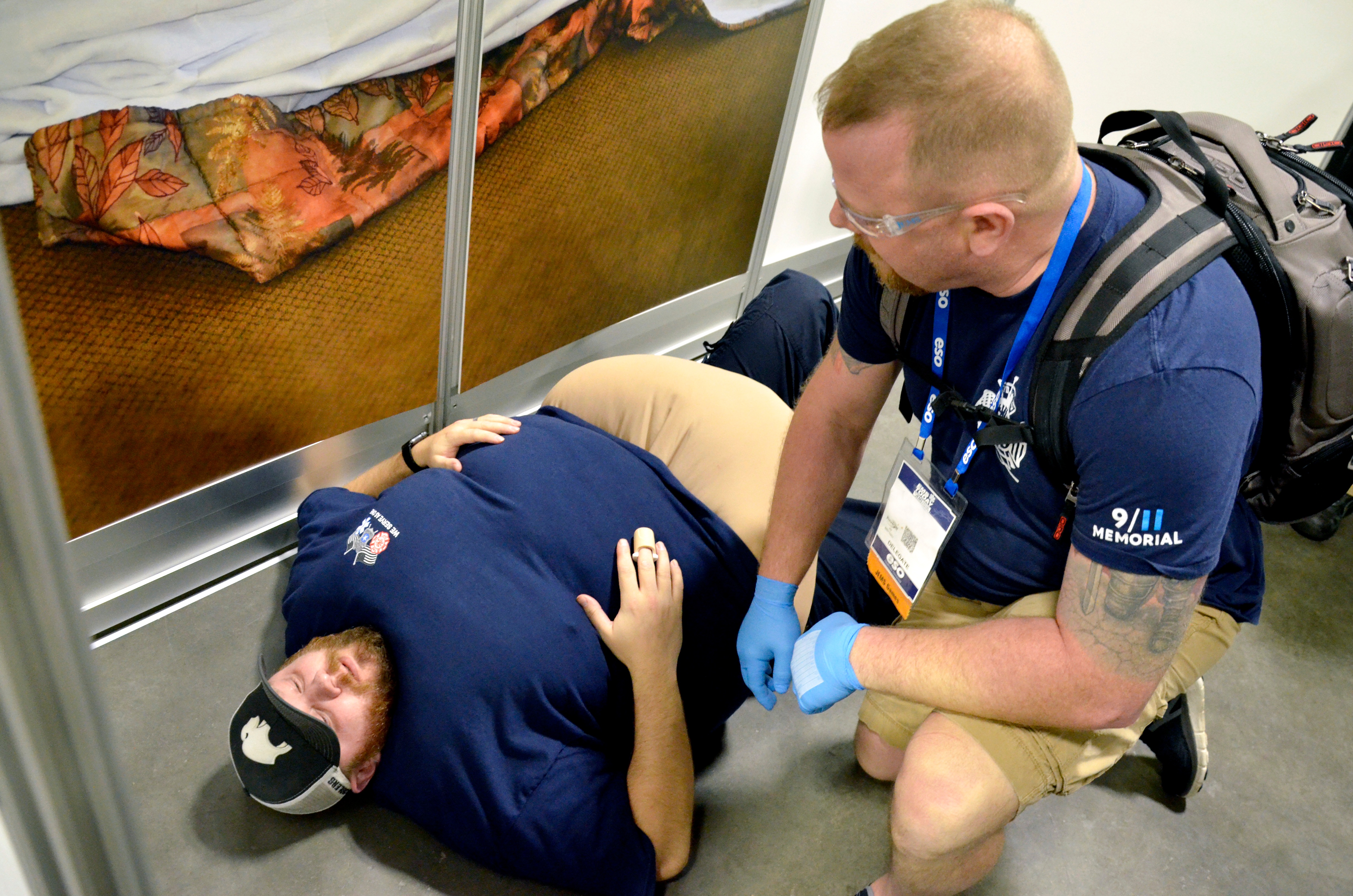
Everybody is a product of their own experiences. Simulation in education is important so students can continue to process sensory input during a real-life situation. Here are five tips for creating immersive scenarios during pre-hospital simulations.* These can be applied to EMS training as well as simulation education in all healthcare fields.
1. Stimulate At Least Three Senses
Chris Kroboth of Fairfax County Fire and Rescue points to Walt Disney as inspiration for this tip, citing that Walt Disney reportedly required every attraction at his parks to stimulate at least three of the five senses to truly immerse guests in the experience.
The same goes for EMS training; by stimulating as many senses as possible, the created scenario echoes real life. The more students learn to associate certain smells, sounds, and sights to a specific situation in a simulation, the more easily they will be able to recall their training when they encounter that situation in the field.
Don’t cut corners here; it’s nearly impossible for students to “imagine” or “pretend” that certain stimuli are present in the simulation when they’re not. Take advantage of all the resources at your disposal to create a scene that truly stimulates three senses. Consider using simulated smells, moulage, and even recorded sounds, so that these sensory elements are familiar when they encounter them in the field.
2. Be Intentional with Scene Selection
Choose a scene in which a student must complete as many tasks as possible at one time. Multi-tasking is inevitable in first-response settings. Laser-focused simulations may help students test well, but they don’t always translate into quality real-life outcomes. Rather, try to pack scenarios with as many moving parts as possible. A simulated scenario, where the stakes are relatively low, is the time to acclimate students to the overwhelming stimuli that can occur in a crisis – rather than during a real-life run when stakes, adrenaline, and tensions are all high.
3. Set Clear and Attainable Objectives
Don’t set unrealistic objectives for students. Know where they are and what they’ve learned so far, as well as their field experience level. A continuing education course for EMTs with 10 years of experience under their belts can include a curve ball to challenge them with an unexpected and rare case. But students fresh out of basic training, or in their first training course, need to solidify their basic life-saving and patient assessment skills before they can advance to more nuanced scenarios.
A method for setting attainable goals within a scene is to stack the scenario with three measurable challenges: one that covers a basic skill the students should know, and two that pose new challenges they may have never seen but should be prepared to deal with.
Setting realistic goals can go a long way in students’ confidence levels and ability to perform; read more about setting specific and attainable goals in a simulation see, “Setting S.M.A.R.T. Goals for the Classroom.”
4. Don’t Set Bad Habits
When creating a scenario, be sure to include variables like patient-transport time, limited space, and obstacles between the site of the victim and the mock ambulance. It would be a grave mistake to allow students to finish the simulation and then say, “Okay, and pretend we went to the ambulance.” The time and maneuvering it takes to physically transport a patient to the ambulance should always be included; it’s a real learning opportunity, and if educators gloss over things like transporting a patient in a stairwell, opening a manually operated door while managing a gurney, and dealing with crowds or other obstacles, students will suffer for it and find themselves struggling during their first few runs in the field when these situations inevitably come up.
5. Don’t Skim Over Environmental Factors
Although resources may be limited, every effort should be made to set a realistic environment for the simulation. If the scenario involves finding an unconscious victim in an alleyway in January, don’t run the scenario inside, even though that may be the usual training location. If it’s winter, go outside, and vice versa for running scenarios in extreme heat. A scenario should have the most accurate setting possible so that students can realistically deal with the challenges in front of them, including those caused by weather and outdoor conditions.
Keep these tips in mind when creating scenarios, and the simulations will be the most realistic and life-like that your students encounter in their career. Be sure to use recording devices as students perform the scenarios, both for use in debriefing and for potential educational use in the future.
Consider submitting a reliable and challenging out-of-hospital scenario to The NAEMSE Scenario Challenge for 2019. The developer of the best scenario will receive registration, two nights’ hotel accommodations, and airfare to the attend the 2020 NAEMSE Symposium, in addition to an iPad furnished by iSimulate®.
Leave tips on how to make scenarios realistic and immersive in the comments below!
* “5 Tips for Creating an Immersive Simulation Scenario” is based on the breakout session Just Do It: Simulation Made Easy presented at EMS Today, the JEMS Conference and Exposition in National Harbor, MD, on February 19, 2019 by Gary Heigel, Emergency Services Department Chair at Rogue Community College; Chris Kroboth, Training Captain at Fairfax County Fire and Rescue, Fairfax, VA; and Jon Bailey, QA/QI Lieutenant, Fairfax County Fire and EMS. The session was sponsored by iSimulate, and some materials, including simulated scents, were provided by EMSEd™ by Pocket Nurse®.






